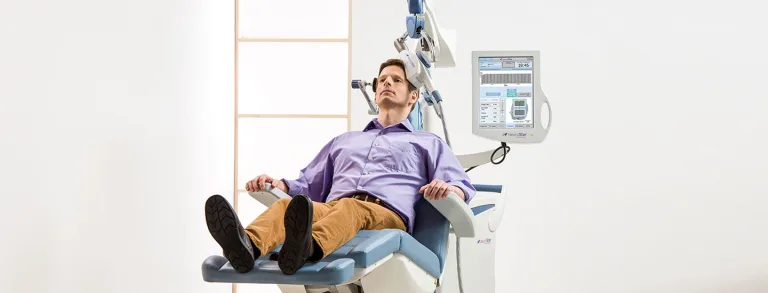Becoming aware of your specific attachment style can significantly impact your emotional well-being and relationships. Individuals with anxious attachment style often experience a heightened fear of abandonment, leading to excessive need for reassurance and emotional dependency. These tendencies can create challenges forming secure and healthy relationships, often causing strain in romantic partnerships, friendships, and even familial dynamics.
Understanding and managing anxious attachment is crucial for personal growth and fostering stronger connections with others. By recognizing the triggers and developing strategies to address this attachment style, individuals can work toward building healthier, more secure relationships.
In this blog, we will explore the triggers that worsen anxious attachment and provide actionable solutions to help manage and fix these behaviors, leading to more fulfilling relationships and emotional balance.
For more details on our treatment services, visit PsychPlus and the treatments we provide, where we offer comprehensive care for various mental health conditions.
What Is Anxious Attachment Style?
Attachment styles come from a concept called attachment theory; anxious attachment is characterized by intense fear of abandonment, constant need for reassurance, and generalized insecurity and anxiety in relationships. This attachment style develops in childhood and can have lasting effects on adult life.
Understanding Anxious Attachment in the Context of Attachment Theory
Anxious attachment style stems from attachment theory, a psychological framework developed by John Bowlby. This theory explains how the bond between a caregiver and a child forms the foundation of the child’s ability to connect with others later in life. When a caregiver provides inconsistent attention—sometimes offering support and at other times being emotionally unavailable—it creates uncertainty in the child about whether their emotional needs will be met. As a result, the child develops an anxious attachment style, marked by a deep fear of abandonment and emotional insecurity.
How Anxious Attachment Develops in Childhood
During childhood, our primary caregivers shape our emotional blueprint. If a child’s caregiver is nurturing and responsive, they tend to form a secure attachment, which helps them trust others and feel emotionally stable. However, when caregivers are unpredictable—providing affection at times and neglecting emotional needs at others—the child becomes unsure about the reliability of relationships. This inconsistency creates a heightened level of anxiety around emotional bonds, making the child more prone to clinginess, fear of abandonment, and self-doubt.
This attachment style often carries into adulthood, where relationships become a source of anxiety rather than comfort. Adults with an anxious attachment style may overanalyze their partner’s behaviors, searching for signs of emotional withdrawal, even when none exist. This leads to a cycle of insecurity that can push partners away, ironically fulfilling the very fears of abandonment that anxious individuals are trying to avoid.
Long-Term Impact on Adult Relationships
As these childhood patterns continue into adult life, individuals with anxious attachment often struggle with romantic relationships. They crave emotional closeness but frequently feel insecure about their partner’s feelings, leading to behaviors that can strain the relationship.
Common traits in anxious attachment include:
- Fear of abandonment: Constantly worrying that their partner will leave or lose interest, even when there is no real threat.
- Excessive need for reassurance: Frequently seeking validation from their partner to feel secure, often asking questions like, “Do you still love me?” or “Are you happy with me?”
- Emotional dependency: Relying heavily on the partner for emotional stability, making it difficult to find balance or independence within the relationship.
These behaviors may manifest as frequent calls or messages to check on a partner’s feelings, jealousy over time spent with others, or hypersensitivity to perceived slights. Over time, these traits can exhaust both individuals, leading to misunderstandings, conflict, or even the breakdown of the relationship.
Examples of Anxious Attachment Behaviors in Relationships
In real-life relationships, someone with an anxious attachment style might:
- Frequently ask for reassurance about their partner’s feelings.
- Over-interpret small actions, like a delayed text response, as signs of emotional distance.
- Struggle to spend time apart from their partner without feeling anxious or abandoned.
- Display jealousy or possessiveness over their partner’s interactions with others.
While these behaviors come from a place of deep emotional need, they can create tension in relationships and make it difficult for both partners to feel secure and understood.
To help manage these feelings and develop healthier attachment patterns, therapy can play a crucial role. At PsychPlus, we offer comprehensive treatments for anxiety, depression, and PTSD, which are often associated with attachment issues. Learn more about how our anxiety treatment and depression treatment services can support you in overcoming these challenges.
Common Triggers of Anxious Attachment
Emotional distance, inconsistent communication, and changes in affection are all triggers to be aware of when managing anxious attachment. It’s important to understand how these triggers induce emotional distress in someone with this attachment style, how to address and cope with them, and how past experience plays a role in their affects.
Identifying Triggers that Worsen Anxious Attachment
Individuals with an anxious attachment style often experience heightened sensitivity to certain emotional triggers that can intensify their insecurity. These triggers typically revolve around perceived or real emotional distance, inconsistent communication, and even subtle changes in behavior. For someone with an anxious attachment style, these small shifts can create significant emotional distress.
Some common triggers include:
- Emotional distance: When a partner becomes less emotionally available, whether due to stress, work, or personal issues, it can activate deep-rooted fears of abandonment. The individual with anxious attachment may interpret this distance as a sign that the relationship is in jeopardy.
- Inconsistent communication: When communication patterns change—such as fewer texts, delayed responses, or reduced verbal affection—it can trigger a sense of insecurity. The anxious partner might constantly seek reassurance, asking questions like, “Are you upset with me?” or “Do you still care about me?”
- Changes in affection: Small shifts in physical or emotional affection, like fewer compliments or a decrease in physical closeness, may also cause worry. The anxious individual might interpret these changes as a sign of disinterest or impending rejection.
How These Triggers Activate Insecurity and Anxiety
When faced with these triggers, individuals with anxious attachment often experience a cascade of negative emotions. Their fear of abandonment can lead them to overanalyze situations, misinterpret innocent actions, or become preoccupied with thoughts of losing their partner. As their anxiety builds, they may engage in behaviors that seek reassurance, such as:
- Excessively texting or calling to check on their partner’s feelings.
- Seeking constant validation through questions like, “Do you love me?” or “Are we okay?”
- Reacting emotionally to perceived signs of rejection, which may lead to conflict or withdrawal.
Unfortunately, these behaviors can often push their partner further away, creating a self-fulfilling cycle where the fear of abandonment becomes a reality.
The Role of Past Experiences in Reinforcing Triggers
Many of these emotional triggers are reinforced by past experiences, particularly during childhood or early relationships. If someone with an anxious attachment style had caregivers who were emotionally inconsistent—alternating between being nurturing and neglectful—they likely developed a heightened sensitivity to emotional shifts. These early experiences shape their perception of relationships, leading them to anticipate abandonment and overcompensate by seeking reassurance.
Recognizing these past experiences and their influence on present-day triggers is the first step in managing anxious attachment. By becoming aware of how their past affects their current emotional responses, individuals can start to break the cycle of anxiety and work towards more secure and balanced relationships.
Seeking Professional Support for Managing Triggers
If you or someone you know struggles with anxious attachment and its triggers, seeking professional therapy can provide valuable tools for managing these emotional patterns. Through therapy, individuals can learn to recognize their triggers, manage their responses, and build healthier relationships. At PsychPlus, we offer personalized therapy options that address attachment styles and provide long-term solutions for emotional well-being.
Interested in seeking help? Book an appointment with one of the 200+ qualified mental health providers in the PsychPlus Family today to start your journey toward healthier, more secure relationships.
Understanding the Impact of Anxious Attachment on Relationships
Anxious attachment doesn’t only affect the individual suffering but can cause emotional exhaustion and feelings of hopelessness for their partner as well. The constant need for reassurance can make the significant other feel as if their actions are never enough. A similar response can come from family and friends too, making it important to manage properly to avoid the cyclical nature of this attachment style and to maintain a healthy support system.
The Effects of Anxious Attachment on Romantic Relationships
Anxious attachment style profoundly impacts romantic relationships. Individuals with this attachment style often struggle with a persistent fear that their partner may leave them, leading to excessive reassurance-seeking, jealousy, and emotional dependency. This constant need for validation can create a power imbalance in the relationship, where the anxious partner becomes overly reliant on their partner for emotional stability.
In romantic partnerships, anxious individuals may:
- Frequently question the relationship’s security, asking if their partner still loves or cares for them.
- Feel rejected or hurt by minor changes in their partner’s behavior, such as fewer texts or less physical affection.
- Become overly possessive or jealous, fearing that their partner will find someone else more suitable.
Over time, these behaviors can strain the relationship. The partner of someone with an anxious attachment style may feel overwhelmed, leading to emotional withdrawal, which can further reinforce the anxious individual’s fears and trigger more extreme behavior. This cycle creates ongoing relationship anxiety, making it difficult to maintain a healthy, balanced connection.
Anxious Attachment in Friendships and Family Dynamics
The effects of anxious attachment are not limited to romantic relationships. In friendships, individuals with this attachment style may become overly dependent on their friends for emotional support, often feeling insecure about the stability of the relationship. They may worry that their friends are distancing themselves or abandoning them, even when there’s no real evidence of such.
Similarly, in family dynamics, individuals with anxious attachment can experience feelings of rejection or neglect, especially if they perceive emotional distance from family members. This may manifest in constant attempts to please or seek approval from loved ones, which can lead to feelings of resentment or exhaustion on both sides.
The Emotional Toll of Anxious Attachment on Both Partners
The emotional toll of anxious attachment affects both individuals in the relationship. For the anxious partner, the constant fear of abandonment and rejection leads to heightened anxiety, self-doubt, and emotional exhaustion. They may feel trapped in a cycle of seeking reassurance and feeling momentary relief, only for the anxiety to resurface.
For the partner of an anxious individual, the need to constantly provide reassurance can be draining. Over time, they may feel like they cannot meet the emotional demands of their anxious partner, leading to feelings of frustration and withdrawal.
This ongoing tension often escalates into relationship anxiety, where both partners struggle to maintain a secure and trusting connection. Without intervention, the emotional strain may lead to dissatisfaction, conflict, and in some cases, the dissolution of the relationship.
Prevalence of Relationship Anxiety Caused by Anxious Attachment
Studies have shown a strong correlation between anxious attachment and relationship anxiety. Research published in the Journal of Personality and Social Psychology found that individuals with anxious attachment styles are more likely to experience heightened relationship anxiety and emotional distress in romantic relationships. Another study in the Journal of Social and Personal Relationships highlighted that those with anxious attachment often have difficulty trusting their partners, leading to conflicts and relationship dissatisfaction.
Understanding the prevalence of anxious attachment in relationships can help individuals recognize the impact it may have on their personal dynamics. With the right tools and support, such as therapy or relationship counciling, individuals can learn to manage their attachment behaviors and build more secure, fulfilling relationships.
If you’d like to learn more about how anxiety affects relationships and the various types of anxiety disorders, check out our educational blogs page.
Effective Strategies to Manage Anxious Attachment
Practicing mindfulness, self-soothing techniques, and setting healthy boundaries are a few of the ways one can learn to rebalance the way they approach relationships. In this section, we will discuss identifying emotional needs and self-awareness, techniques to cultivate secure attachment, and the importance of self-compassion and emotional independence.
Identifying Emotional Needs and Practicing Self-Awareness
The first step in managing anxious attachment is to develop self-awareness by identifying emotional needs and understanding how they influence behavior in relationships. Individuals with an anxious attachment style often struggle with an overwhelming desire for closeness, stemming from deep-rooted fears of abandonment. By becoming aware of these needs, individuals can begin to separate irrational fears from reality, allowing them to take proactive steps toward emotional growth.
One way to start this process is by asking:
- What specific situations trigger my anxiety in relationships?
- How do I react when I feel insecure or worried about abandonment?
- What emotional needs am I seeking to fulfill, and are they realistic?
Once these emotional patterns are recognized, individuals can begin working on healthier responses that don’t rely on seeking constant reassurance from others.
Techniques to Cultivate Secure Attachment
To move away from anxious attachment and toward a more secure attachment style, several effective strategies can be applied. These techniques help individuals develop emotional independence while fostering healthier, more stable relationships:
- Mindfulness: Practicing mindfulness helps individuals stay present in their relationships, allowing them to manage their emotional reactions and prevent them from spiraling into anxiety. It encourages a balanced perspective, reducing the intensity of fear-driven thoughts.
- Self-Soothing: Self-soothing techniques, such as deep breathing, journaling, or physical activity, help regulate emotions in moments of anxiety. These practices enable individuals to calm themselves rather than seeking validation or reassurance from their partner.
- Setting Healthy Boundaries: Establishing and maintaining clear boundaries is crucial for emotional well-being. Boundaries create space for both partners to maintain their individuality and independence, which helps reduce emotional dependency.
These techniques empower individuals to develop a secure attachment style, promoting trust, stability, and emotional balance in their relationships.
The Importance of Self-Compassion and Emotional Independence
A key component of managing anxious attachment is practicing self-compassion. People with anxious attachment often rely on external validation to feel worthy, leading to emotional dependency on their partners. Learning to cultivate self-worth independent of others is essential for reducing attachment anxiety.
Self-compassion involves:
- Being kind to oneself in moments of distress rather than seeking comfort from others.
- Recognizing that feeling insecure or anxious is a common human experience.
- Focusing on personal growth and accepting that it’s okay to not have everything figured out.
When individuals stop relying on external validation, they can build emotional independence. This reduces the constant need for reassurance and fosters healthier, more balanced relationships.
Seeking Professional Support for Anxious Attachment
If you find that anxious attachment is significantly impacting your relationships, professional support may be a valuable step toward healing. Therapy can help address the root causes of attachment anxiety and provide tools for managing it effectively. At PsychPlus, we offer personalized treatment options tailored to individual needs, and our What We Treat page provides detailed information on various mental health conditions that we treat. If you’re considering treatment options, refer to our Insurance Page to see if you’re covered! We accept almost every insurance plan, so chances are, you are.
How Therapy Can Help Fix Anxious Attachment Style
Here, we’ll discuss how therapy can make a life-changing difference and what kinds of therapies are used to address anxious attachment.
The Role of Attachment Style Therapy in Addressing Deep-Rooted Issues
Therapy plays a crucial role in helping individuals with anxious attachment style address the underlying issues that contribute to their relationship struggles. Anxious attachment is often rooted in early childhood experiences, where inconsistent caregiving led to insecurity and fear of abandonment. Through attachment style therapy, individuals can begin to explore these early experiences and understand how they influence current behaviors and emotional responses in relationships.
Therapists help clients recognize patterns of thought and behavior that reinforce their anxious attachment. By addressing these deep-rooted fears, individuals can gradually work towards building healthier, more secure attachments.
How Therapists Use Attachment Theory Counseling to Overcome Relationship Anxiety
Attachment theory counseling is a therapeutic approach that focuses on the bond between an individual and their caregivers or significant others. In the context of anxious attachment, this type of counseling helps individuals understand how their early attachment experiences shape their current relationship dynamics.
During therapy, clients are encouraged to:
- Explore their past relationships and identify patterns that have contributed to their anxiety.
- Examine their fear of abandonment and learn to differentiate between real and perceived threats.
- Develop healthier emotional responses to triggers, reducing the need for constant reassurance and validation.
This process enables individuals to move away from their anxious attachment tendencies and form more secure, stable relationships. Therapists guide clients through this journey by teaching them how to manage their emotional responses, communicate effectively with their partners, and set boundaries to promote emotional independence.
Cognitive Behavioral Therapy (CBT) and Other Therapeutic Approaches for Anxious Attachment
One of the most effective therapeutic approaches for fixing anxious attachment is Cognitive Behavioral Therapy (CBT). CBT helps individuals challenge negative thought patterns that fuel their anxiety and emotional dependency. By identifying and reframing these thoughts, clients can learn to manage their fears and reduce anxious behaviors.
In addition to CBT, other therapeutic approaches include:
- Emotionally Focused Therapy (EFT): This approach helps individuals identify and express their emotions in a healthy way, promoting deeper emotional connections with others.
- Mindfulness-Based Therapy: Incorporating mindfulness into therapy allows individuals to stay present in the moment and manage their anxiety without being consumed by fears of abandonment.
- Psychodynamic Therapy: This long-term approach focuses on exploring unconscious processes and unresolved conflicts from childhood that contribute to attachment anxiety.
These therapies equip individuals with the tools they need to overcome relationship anxiety and build more secure, trusting connections.
Inviting Healthcare Providers to Refer Patients for Specialized Treatment
If you’re a healthcare provider or know someone who might benefit from specialized therapy for anxious attachment, you can refer patients to PsychPlus for expert care. Our team specializes in treating attachment issues, relationship anxiety, and other related concerns. For more details on how to refer a patient, visit our Referral Page.
Long-Term Solutions for Overcoming Anxious Attachment
Finally, here are some healthy habits to implement on your journey towards a more secure attachment style. If you need more support, be honest with your support system or contact us today to get the help you need to create a better life.
Developing a Secure Attachment Style Through Self-Work
Overcoming anxious attachment is a process that takes time, but with consistent effort, individuals can transition towards a more secure attachment style. The key to progress lies in self-awareness and a commitment to personal growth. One of the first steps in this journey is understanding how attachment patterns influence behavior and learning to respond in healthier ways.
To develop a secure attachment style, individuals can:
- Practice emotional regulation: Learn to manage emotions without overreacting to triggers, using mindfulness or deep-breathing techniques to calm the mind in stressful moments.
- Cultivate self-reliance: Build confidence in oneself by focusing on personal achievements and self-worth. The less dependent one is on external validation, the more secure they feel in their relationships.
- Challenge negative thoughts: Question irrational fears of abandonment and reframe them with more realistic, positive beliefs about relationships.
Tips for Building Healthy Relationships
Building healthy relationships requires strong communication, trust, and emotional resilience. Here are some tips for fostering connections that thrive:
- Open and honest communication: Share thoughts and feelings openly with partners or loved ones and encourage them to do the same. This creates an environment of trust and reduces misunderstandings.
- Set and respect boundaries: Healthy boundaries are essential for emotional well-being. Know your limits and communicate them clearly, while also respecting the boundaries of others.
- Develop emotional resilience: Learn to bounce back from emotional setbacks without taking them personally. Resilience helps individuals maintain perspective and prevent small issues from escalating into bigger problems.
By applying these strategies, individuals can nurture more secure, fulfilling relationships that are built on trust and mutual understanding.
Support Groups and Resources for Continued Growth
For those seeking ongoing support in managing anxious attachment, joining a support group can be a valuable resource. These groups provide a safe space to share experiences and learn from others who are going through similar challenges. Additionally, there are numerous online resources and workshops designed to help individuals work through attachment issues and build healthier relationships.
Professional therapy is another effective long-term solution. Therapists can guide individuals through difficult emotional transitions and provide tools for developing secure attachment patterns.
We offer a range of resources and support for individuals dealing with anxious attachment and relationship anxiety. Visit our Blog Main Page to explore more articles on managing emotional well-being and building stronger, healthier connections.
Conclusion
Understanding and managing anxious attachment styles is crucial for fostering healthier and more fulfilling relationships. By recognizing the key traits of anxious attachment and applying practical solutions, individuals can work towards developing more secure and balanced connections with their partners, friends, and family.
Taking the first steps toward addressing anxious attachment may involve self-reflection, communication, and seeking professional guidance. Remember, it’s a journey, and every effort counts toward improving your relationship dynamics and overall well-being.
Ready to take control of your attachment style and enhance your relationships? Please book an appointment with one of the high-quality, experienced therapists in the PsychPlus network to explore tailored strategies and support for your unique needs. Your path to healthier, more secure connections starts here.





